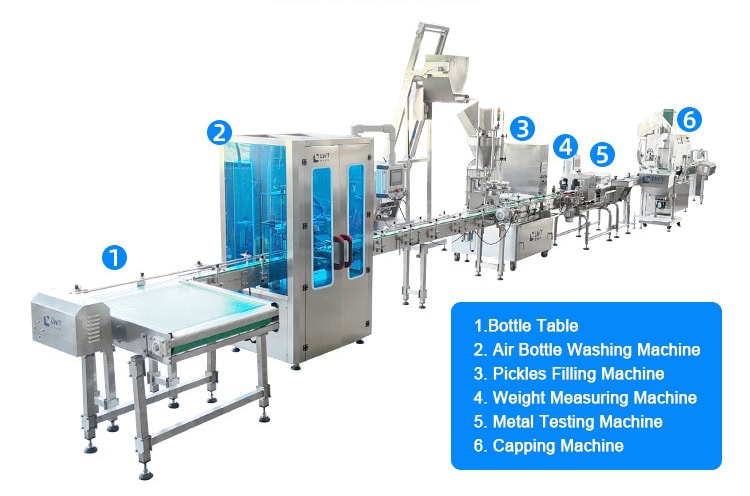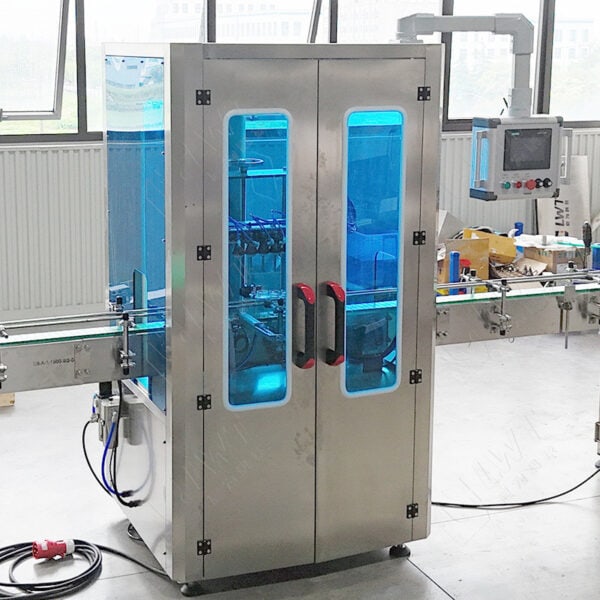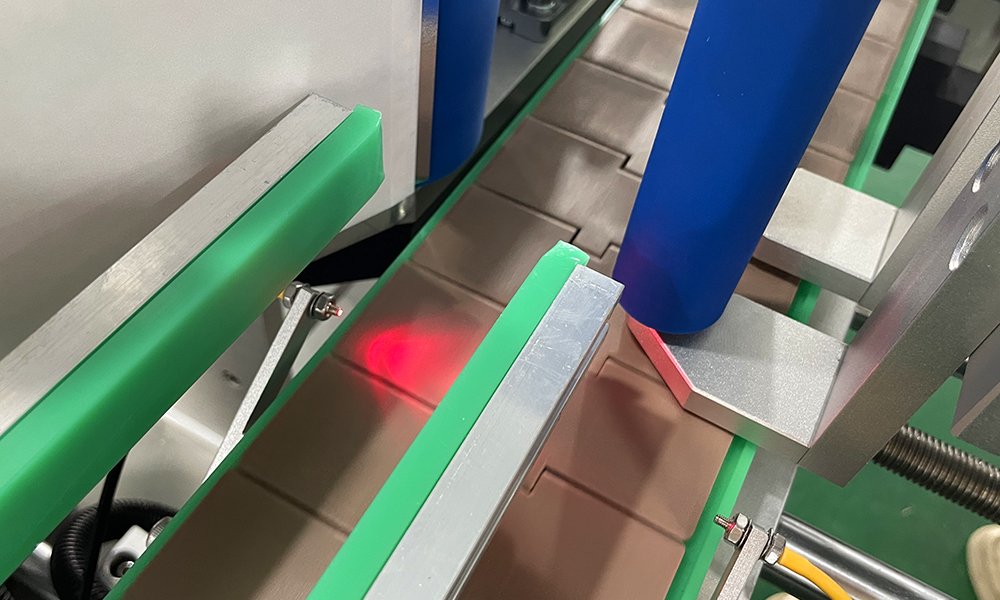Bottled water filling production lines often face costly downtime and quality issues due to insufficient maintenance. Regular and targeted maintenance can prevent these disruptions, keeping production steady and maintaining the product’s quality.
Regular maintenance of a bottled water filling production line involves cleaning, lubrication, inspection, and calibration of components. Following a structured maintenance schedule enhances performance, minimizes downtime, and extends the equipment’s life.
Proper maintenance of a filling line ensures efficiency and product safety. Here’s a detailed guide to essential maintenance practices.

Establish a Maintenance Schedule
Setting up a routine maintenance schedule is the foundation of reliable production. Daily, weekly, monthly, and annual tasks should be established to cover essential areas.
- Daily: Clean components that come into direct contact with water, and check for loose or damaged parts.
- Weekly and Monthly: Lubricate moving parts, inspect for wear, and recalibrate as needed to maintain optimal performance.
- Annual Maintenance: Plan for a thorough check and replacement of critical parts like valves and seals, ensuring they meet safety standards.
Establishing a set schedule for each maintenance task ensures that no critical steps are overlooked, promoting continuous production.
Cleaning Procedures
Cleaning is crucial in bottled water production to prevent contamination and maintain high quality. Follow these steps for effective cleaning:
- Daily Cleaning: Clean high-contact areas, such as filling nozzles, conveyor belts, and bottle holders. Remove any buildup to prevent clogging.
- Deep Cleaning: Schedule periodic deep cleans using specialized agents to dissolve any residue that daily cleaning cannot remove. Ensure cleaning agents are safe and suitable for food production.
These procedures reduce the risk of contamination, maintaining the safety and quality of the bottled water.

Lubrication of Moving Parts
Proper lubrication is vital for smooth operation. Regularly apply food-grade lubricants to critical components to avoid friction-related damage and ensure consistent performance.
- Lubricate Conveyor Belts and Gears: This keeps the belt moving smoothly, reducing wear on the motor and preventing belt slippage.
- Avoid Over-Lubrication: Excess lubrication can attract dust and debris, which can lead to equipment malfunctions.
A well-lubricated system reduces strain on the Filling Machine, minimizing repairs and extending the equipment’s operational life.
Inspection of Key Components
Regular inspections of critical components help detect early signs of wear or damage, preventing unexpected breakdowns.
- Check Sensors and Valves: Ensure that sensors are correctly aligned and functional, as they play a key role in filling accuracy. Valves should be inspected for leaks or damage.
- Filling Nozzles and Capping Heads: Look for any signs of clogging or misalignment to avoid product spillage or inconsistent fills.
Routine inspections keep the line running smoothly, reducing unexpected downtimes.
Calibration of Filling and Capping Mechanisms
Calibration ensures precision in filling volumes and capping processes. This step is essential for maintaining product quality and meeting industry standards.
- Filling Calibration: Adjust filling machines to dispense the correct water volume, ensuring consistent fill levels across all bottles.
- Capping Calibration: Verify that the capping mechanism applies the correct pressure, preventing loose caps and preserving the product’s shelf life.
Regular calibration safeguards against variations in fill levels, enhancing consumer trust in your brand.

Monitor Electrical and Control Systems
A reliable electrical system is essential to avoid production interruptions. Routine checks on electrical components help maintain efficient operation.
- Inspect Wiring and Sensors: Ensure wiring is intact, and sensors are operational, as faulty sensors can cause errors in filling or capping processes.
- Update Control System Software: Keep software current to take advantage of improvements in efficiency and functionality.
By maintaining the electrical system, you reduce the risk of breakdowns and ensure the smooth operation of components like the Bottle Labeling Machine.
Ensure Optimal Water Quality Management
Water quality is central to bottled water production. Regularly monitor and maintain water filtration and purification systems to ensure safe and high-quality output.
- Filter Inspections: Check and replace filters to prevent contamination. Filters that are clogged can reduce water quality and lead to production inefficiencies.
- Testing Parameters: Regularly test for contaminants and chemical imbalances, ensuring compliance with health and safety standards.
Quality management not only protects consumers but also enhances the reputation of your brand.
Managing Common Faults and Quick Fixes
Even with a solid maintenance routine, common faults may arise. Equip operators with a troubleshooting guide for quick fixes to minimize disruptions.
- Inconsistent Fill Levels: This can often be corrected by adjusting the filling machine’s valves and recalibrating the sensor.
- Capping Issues: If caps are loose, check the torque setting and adjust the capping machine to apply the correct pressure.
- Sensor Malfunctions: Clean or realign sensors if they fail to detect bottles or produce erratic readings.
Providing operators with quick fixes for frequent issues minimizes production downtime.

Training Operators and Maintenance Staff
Well-trained staff are essential for the consistent performance of the production line. Regular training sessions ensure operators are familiar with the latest maintenance practices and troubleshooting techniques.
- Operator Training: Train operators on handling emergency stops and restarting processes safely. This reduces the time taken to resume production after a fault.
- Emergency Maintenance Skills: Equip the maintenance team with the skills to handle urgent repairs quickly, minimizing impact on production schedules.
Trained operators can keep the Liquid Filling Machine and other equipment in top condition, helping maintain productivity and reducing risks.
Maintain Detailed Maintenance Logs
A maintenance log helps track completed tasks and identify recurring issues. Logging maintenance activities also aids in planning for major overhauls and budgeting for repairs.
- Record Inspections and Replacements: Document each maintenance task and any parts replaced, creating a record of the machine’s history.
- Use Logs for Predictive Maintenance: Analyze logs to anticipate future needs, such as parts that frequently require replacement.
A detailed maintenance log helps in making informed decisions about repairs, replacements, and upgrades, reducing future costs.
Conclusion
Consistent and comprehensive maintenance of the bottled water filling production line ensures efficient production, fewer disruptions, and high-quality bottled water. Adopting a routine that includes cleaning, inspection, and calibration not only reduces costs but also supports long-term operational success.









